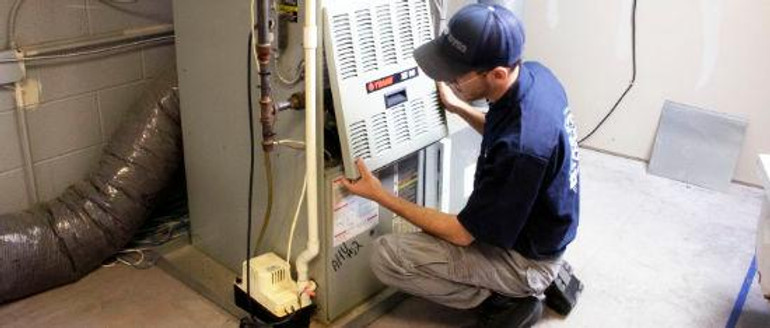The leaves are changing color and the days are getting shorter. This means now is the time to check if your furnace is ready for the coming winter. Here are a few easy steps to switch your HVAC system to heat.
1. Turn on the thermostat
When you switch from cooling to heating, you should gear the heat kick on within a minute. If it doesn't, you can check the furnace fan or heat pump and make sure your HVAC system is on. If the connections are snug but it still doesn't power up, then call us at Technical Hot & Cold Parts or browse our selection of thermostats.
2. Change the air filters
Changing the air filters every few months keeps particles out of your HVAC system and can help to prolong its life, and, if it includes a humidifier you should consider cleaning that too.
3. Cover the A/C condenser
Unless your HVAC is a heat pump, always remember to cover the condenser to protect it from snow and falling icicles. Just don’t wrap it in a tarp which traps in moisture. Technical Hot & Cold carries Innnerflow condenser covers that have a sleek look and vents to keep moisture from getting trapped inside.
4. Lubricate and clean the blower motor
If your motor is the kind that needs lubricating, always ensure the power is turned off. Then open the cover and clean the caps covering the bearings before removing the caps and lubricating the bearings.
5. Test the ignitor
You might have to relight the pilot if you are using an older system, whereas newer systems have electronic ignitors. You can check the breaker or push the reset button on the ignitor if it isn’t working, but if you have done this and it still doesn't work, then call us at Technical Hot & Cold Parts or browse our selection of OEM ignitors.
6. Test and clean the flame sensor
This is one of the more common items to fail on winter startup. We recommend examining the flame sensor and cleaning with virgin steel wool if necessary. Given how cheap the flame sensors tend to me, we recommend replacement more often than cleaning for peace of mind.
7. Inspect the flue, heat exchanger, and carbon monoxide detectors
A faulty heat exchanger poses a fatal risk to you and your family. Inspect your heat exchanger for cracks and run a carbon monoxide test. We also recommend installing a carbon monoxide detector nearby. A flue should be inspected periodically and carbon monoxide detectors should be maintained to help protect you and your family.
8. Replace the filter in your oil-fuelled furnace and check the tank level
Oil furnaces require filter changes, nozzle cleaning and brushing to keep them running smoothly and efficiently, unlike gas burning furnaces.
About the Author

James Clark is the HVAC Controls Specialist and Ecommerce Manager for Technical Hot & Cold. He has been with the company since 2014 and enjoys helping homeowners save money by providing help articles that walk them through various DIY HVAC repairs. In his spare time, he's playing music with his children and spending too much time working on his lawn.

